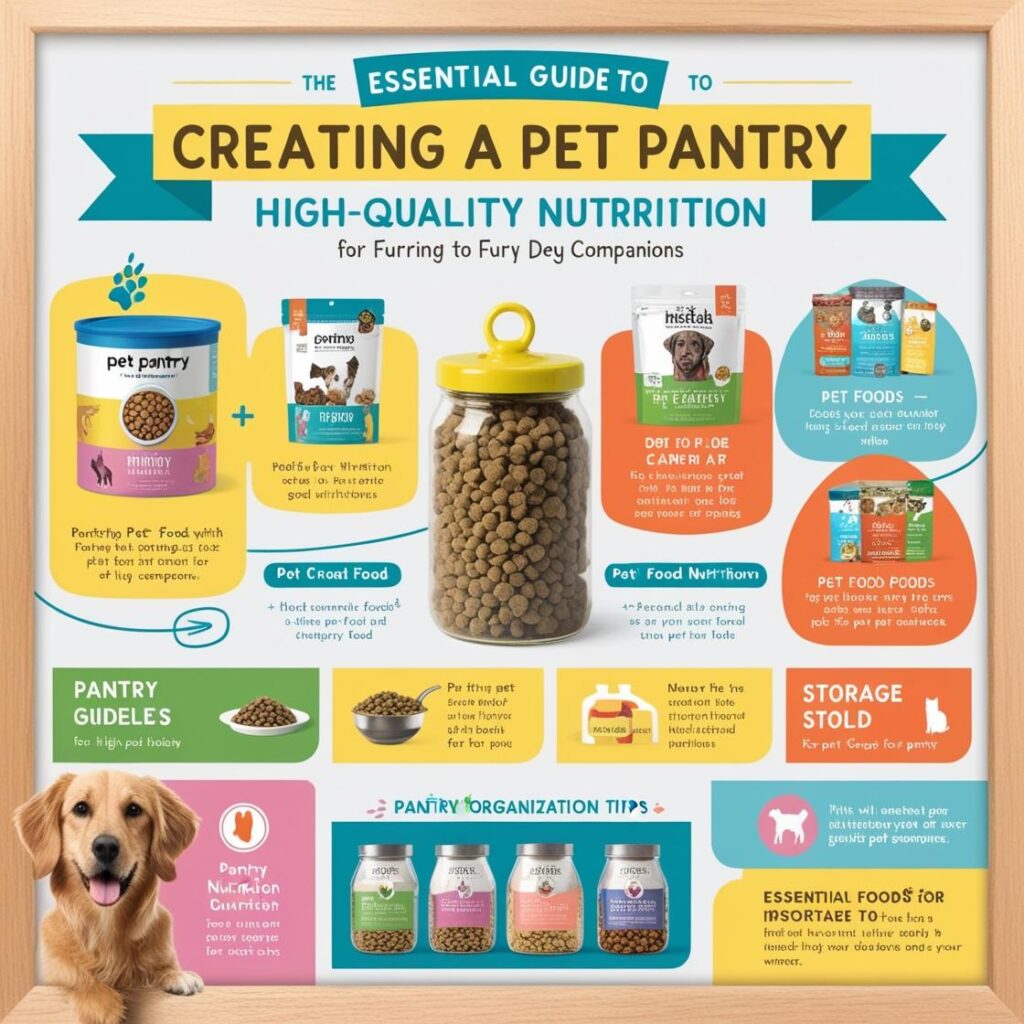As pet owners, one of our foremost responsibilities is to provide our furry friends with high-quality nutrition that supports their health and well-being. Creating a pet pantry is an excellent way to streamline this process, ensuring that we have a reliable stock of pet food and supplies on hand. In this blog post, we will explore the concept of a pet pantry in depth, discussing its importance, best practices for setting one up, and tips for maintaining it over time.
Understanding the Pet Pantry Concept
Much like a traditional pantry that serves human dietary needs, a pet pantry is a designated space for storing pet food, treats, medications, and other essential supplies. The organization of such a pantry can significantly ease the stress associated with feeding pets, allowing for quick access to vital items while also ensuring that your pet receives a balanced diet.

The Importance of a Pet Pantry
- Convenience: A well-stocked pet pantry saves time and reduces the need for frequent last-minute trips to the store. You can buy in bulk and keep your pantry stocked, allowing you to prioritize your pet’s diet without the constant worry of running out of food.
- Quality Control: Having a dedicated space for pet supplies allows owners to ensure they are selecting high-quality products. By placing an emphasis on quality, you can avoid common pitfalls, such as expired food or supplies of questionable origin.
- Budget Management: With the ability to purchase food in bulk and take advantage of sales, a pet pantry can help pet owners manage their budget more effectively. This buffer can also reduce impulse purchases and help in planning nutrition.
- Emergency Preparedness: Keeping a well-stocked pantry ensures that, in cases of emergencies such as natural disasters or unexpected incidents, you have enough supplies to keep your pets nourished and healthy.
Setting Up Your Pet Pantry: Best Practices
Creating an efficient and functional pet pantry begins with planning. Here are some best practices to consider:
- Choose the Right Location: Select a cool, dry area in your home, away from direct sunlight and humidity. Basements, hall closets, or even dedicated cabinets can serve as ideal spots for your pet pantry. Ensure this location is easily accessible but secure enough that it prevents pets from rummaging through the stored items.
- Organize by Category: Divide your pantry into sections based on the types of products stored. Common categories include dry food, wet food, treats, medications, grooming supplies, and feeding tools. Using bins, crates, or labeled containers can help maintain organization.
- Inventory Management: Keep a running list of what’s in your pet pantry to avoid surprises. Regularly check expiration dates to ensure you are using items before they spoil. You can set reminders on your calendar to conduct a monthly inventory and refresh supplies.
- Select Quality Products: Invest in high-quality food brands that are appropriate for your pet’s age, size, and health requirements. Consult your veterinarian for recommendations and consider dietary needs such as grain-free options, hypoallergenic foods, or specialized formulas based on health conditions.
- Consider Storage Solutions: Utilize airtight containers to store dry pet food, protecting it from moisture and pests. For treats and smaller items, consider stacking bins or jars. Ensure that the containers are easy to open and that you can see the contents clearly.
- Hydration Station: Don’t forget about hydration; ensure you have a supply of clean, fresh water available at all times. Consider adding a water fountain, which provides continuous circulation and is appealing to many pets.
Maintaining Your Pet Pantry
A pet pantry is not a one-time project; it requires regular upkeep and attention. Here are some tips for ongoing maintenance:
- Regular Cleaning: Clean your pantry periodically to prevent dust accumulation and potential contamination. Wipe down surfaces with mild disinfectants, and ensure that all containers are clean and free of spills.
- Adapt to Your Pet’s Needs: As pets age or develop health issues, their dietary needs may change. Stay in communication with your vet to ensure that you are adjusting your pantry inventory to meet these evolving requirements.
- Rotate Stock: When adding new items to your pantry, practice the “first in, first out” approach. Place newer items at the back and older ones at the front to ensure that the oldest products are used first, preventing waste.
- Educate Family Members: Ensure that everyone in your household understands the importance of the pet pantry and how to maintain it. Encourage them to help with inventory checks and understanding pet feeding schedules.
Conclusion
A pet pantry is a valuable addition to any dedicated pet owner’s home, providing organization, convenience, and peace of mind regarding the nutrition of our beloved companions. Through thoughtful planning and consistent maintenance, a pet pantry can become an indispensable resource that supports both the health of your pet and the overall ease of pet ownership. In a world where convenience is essential, establishing a pet pantry is an effective way to ensure that your furry friends are always well-fed, happy, and healthy.